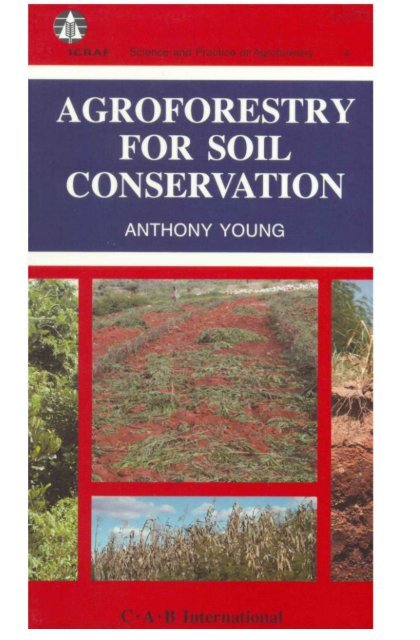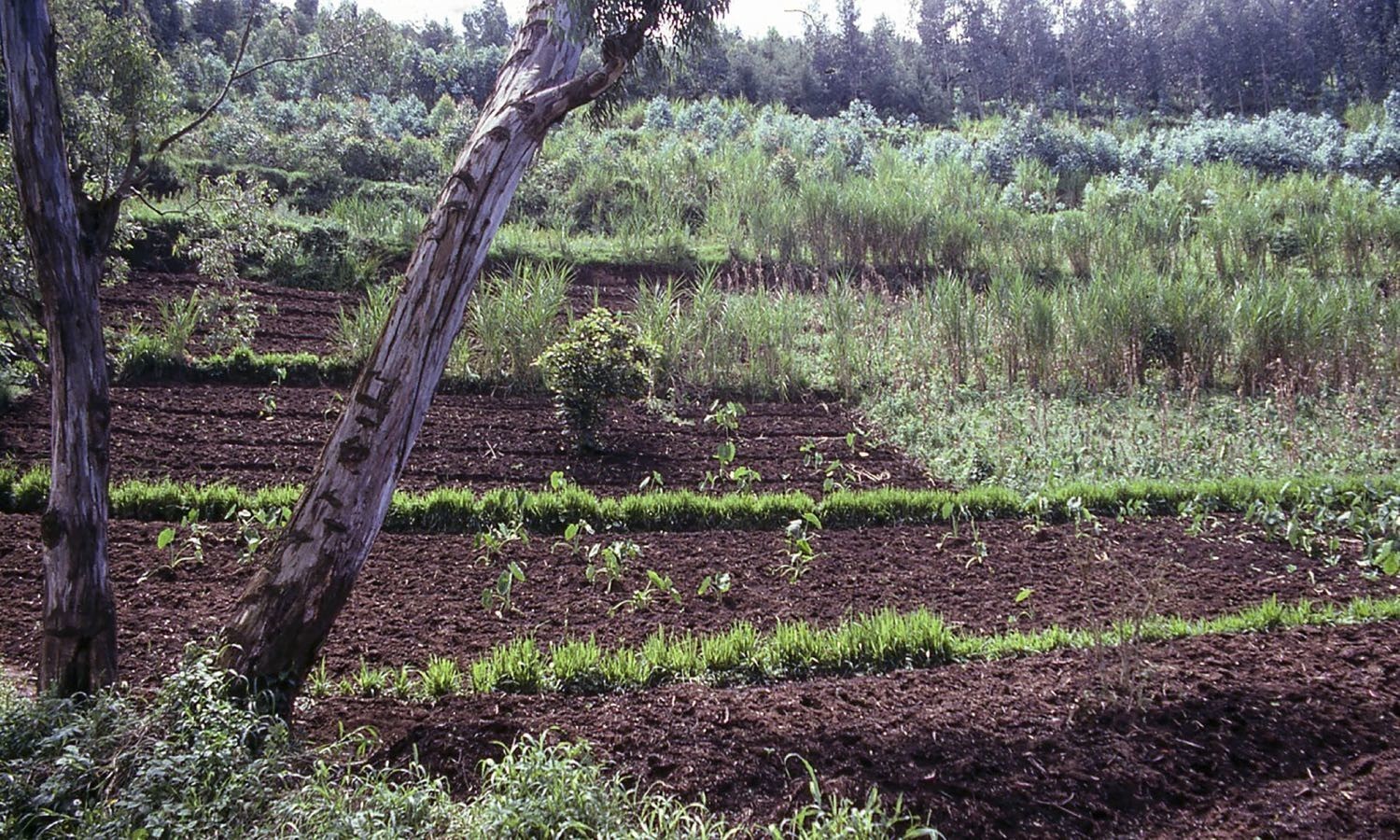Utilizing Agroforestry for Soil Conservation in Punjab

Introduction

Soil erosion is a severe threat to agricultural productivity and environmental stability in Punjab, contributing to the loss of valuable topsoil, nutrient depletion, and increased flood risks. Agroforestry practices, which integrate trees and shrubs into agricultural systems, offer a promising solution to mitigate soil erosion and improve land health. This paper explores the potential of agroforestry for soil conservation in Punjab, examining its benefits, implementation approaches, and case study examples.

Benefits of Agroforestry for Soil Conservation
- Reduced Soil Loss: Tree roots bind soil particles together, creating a stable soil structure that resists erosion by wind and water.
- Increased Organic Matter: Agroforestry practices, such as intercropping and mulching, increase organic matter content in the soil, which improves soil structure and water infiltration, reducing runoff and erosion.
- Improved Water Infiltration: Trees and shrubs slow down the flow of water during rainfall, allowing water to percolate into the soil rather than running off the surface.
- Buffer Zones: Tree rows planted along field boundaries or waterways serve as buffer zones, trapping sediment and reducing erosion caused by runoff from adjacent areas.
- Microclimate Regulation: Agroforestry systems create a microclimate that reduces temperature fluctuations, wind speed, and evapotranspiration, further protecting the soil from erosion.
Implementation Approaches
- Silvopasture: Combining livestock grazing with tree and shrub plantations. Trees provide shade, forage, and soil protection, while livestock manure enriches the soil.
- Alley Cropping: Growing cash crops, such as maize or wheat, between rows of nitrogen-fixing trees (e.g., leucaena, sesbania). The trees provide shade, windbreaks, and soil enhancement.
- Agroforestry Strips: Establishing parallel strips of trees and shrubs within agricultural fields. These strips help control erosion, conserve moisture, and provide habitat for beneficial insects.
- Contour Hedgerows: Planting hedgerows along contours to slow down runoff, trap sediment, and create terraces.
- Buffer Strips: Planting trees and shrubs along rivers, canals, and other waterways to prevent erosion, filter runoff, and protect water quality.
Case Study Examples
- The Punjab Agroforestry Project (PAP): A successful agroforestry project implemented by the Pakistan Forest Institute (PFI) has demonstrated the effectiveness of agroforestry practices for soil conservation. The project established thousands of hectares of agroforestry systems, resulting in significant reduction in soil loss and improved soil health.
- Private Agroforestry Farms: Many private farmers in Punjab have adopted agroforestry practices to improve soil health and productivity. For example, Mr. Ameer Hayat, a farmer from Sheikhupura, established an agroforestry system on his farm, which has resulted in increased crop yields and reduced soil erosion.
Conclusion
Agroforestry practices hold immense potential for soil conservation in Punjab. By integrating trees and shrubs into agricultural systems, farmers can effectively mitigate soil erosion, improve soil health, and enhance the sustainability of their farming operations. The government, researchers, and extension services should continue to promote and support agroforestry practices to protect Punjab’s precious soil resources and secure a prosperous future for agriculture and the environment.## Utilizing Agroforestry for Soil Conservation in Punjab
Executive Summary
Agroforestry, the integration of trees and shrubs into agricultural systems, offers a promising approach for soil conservation in Punjab. This practice improves soil health, reduces erosion, and enhances crop yields. This article explores the benefits and implementation strategies of agroforestry in Punjab, highlighting its potential to mitigate soil degradation and ensure agricultural sustainability.
Introduction
Punjab, a fertile agricultural region in Pakistan, faces significant challenges related to soil erosion and degradation. These issues threaten crop productivity, water quality, and overall ecosystem health. Agroforestry emerged as a viable solution, harnessing the natural abilities of trees and shrubs to protect and enhance soil resources.
Frequently Asked Questions (FAQ)
What are the benefits of agroforestry in soil conservation?
- Reduced erosion: Tree roots bind the soil, preventing erosion caused by wind and water.
- Improved soil structure: Trees and shrubs add organic matter, improving soil porosity and reducing compaction.
- Enhanced nutrient retention: Trees absorb and recycle nutrients, making them available for crops.
How can agroforestry be implemented in Punjab?
- Silvopasture: Integrating trees and shrubs into grazing lands to provide shade and protection for livestock.
- Alley cropping: Planting trees or shrubs between crop rows to serve as windbreaks and improve soil health.
- Shelterbelts: Establishing rows of trees along field boundaries to reduce wind erosion.
What are the challenges associated with agroforestry?
- Competition for water and nutrients: Trees and crops may compete for essential resources, requiring careful planning and management.
- Land availability: Agroforestry requires sufficient land area, which may not always be available in densely populated regions.
- Farmer adoption: Encouraging farmers to adopt agroforestry practices requires education, incentives, and support.
Subtopics
Alley Cropping:
- Description: Planting trees or shrubs between crop rows to improve soil health and reduce erosion.
- Important Points:
- Nitrogen-fixing trees (e.g., Leucaena) can enhance soil fertility.
- Provide shade and windbreaks, reducing crop stress and water loss.
- Act as natural pest control agents.
Silvopasture:
- Description: Integrating trees and shrubs into grazing lands to improve pasture productivity and soil health.
- Important Points:
- Provides shade and shelter for livestock, improving animal health and welfare.
- Reduces nutrient runoff and soil erosion caused by grazing.
- Can increase forage and hay production.
Shelterbelts:
- Description: Establishing rows of trees along field boundaries to reduce wind erosion and improve soil moisture.
- Important Points:
- Coniferous trees (e.g., spruce, pine) are effective windbreaks.
- Deciduous trees (e.g., ash, maple) provide additional shade and wildlife habitat.
- Can improve crop yields by reducing wind damage and water loss.
Tree Intercropping:
- Description: Planting trees in existing crop fields to improve soil fertility and reduce erosion.
- Important Points:
- Nitrogen-fixing trees (e.g., acacia) can enrich the soil with nutrients.
- Provide shade, reducing heat stress and water evaporation.
- Can enhance biodiversity and provide habitat for beneficial insects.
Multistrata Agroforestry:
- Description: Establishing a complex system of trees, shrubs, and crops at different canopy levels.
- Important Points:
- Optimizes land use by maximizing vertical space.
- Improves soil health, water conservation, and erosion control.
- Provides diverse habitats for wildlife and enhances biodiversity.
Conclusion
Agroforestry offers a comprehensive approach to soil conservation in Punjab. By integrating trees and shrubs into agricultural systems, farmers can improve soil health, reduce erosion, and enhance crop yields. However, careful planning, management, and farmer education are crucial to the successful implementation of agroforestry practices. Embracing agroforestry can pave the way for sustainable agriculture in Punjab, ensuring the longevity of its fertile soils and the well-being of its farming communities.
Keyword Tags
- Agroforestry
- Soil Conservation
- Punjab
- Silvopasture
- Alley Cropping